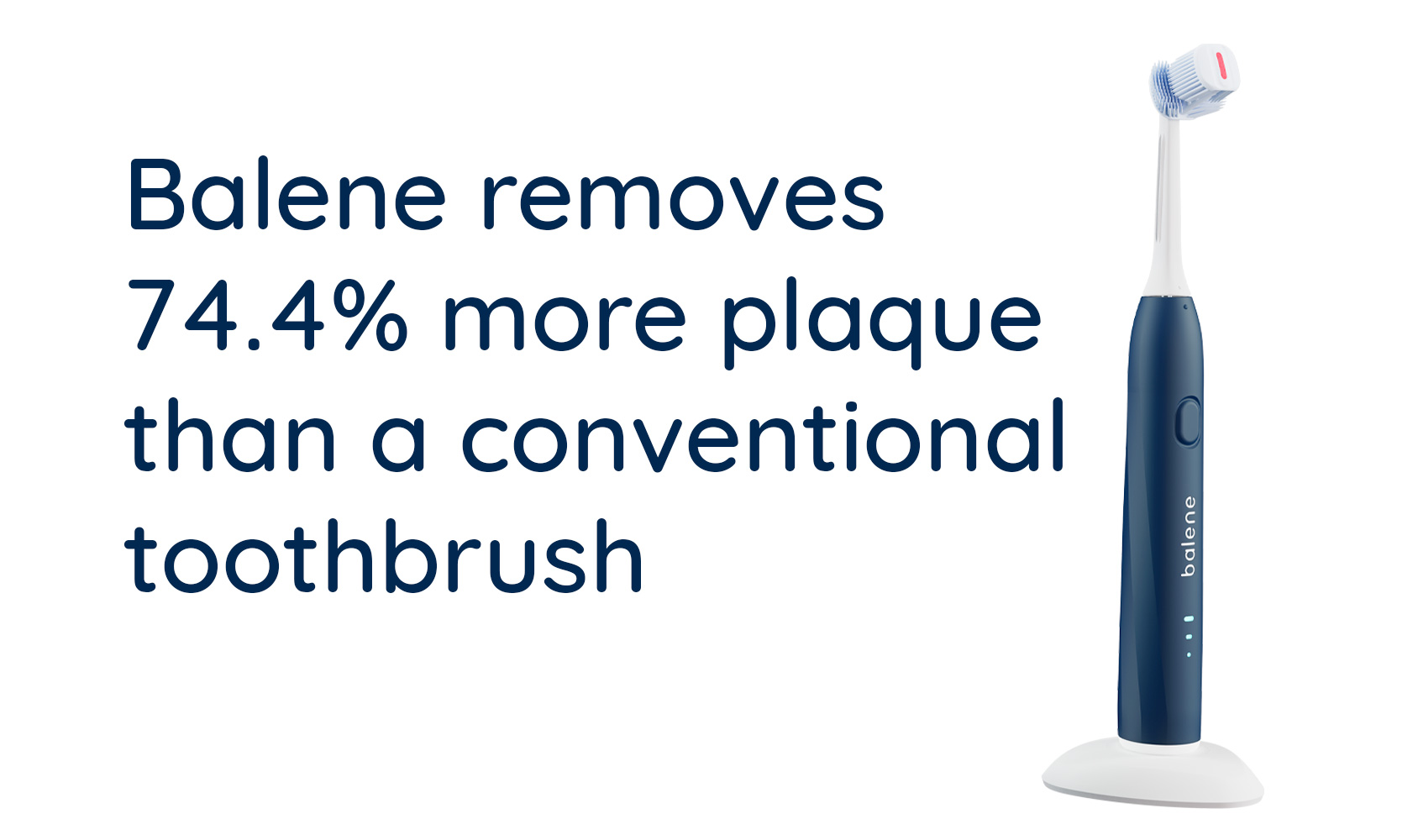- Cart is empty
Is your tooth brushing technique correct? It is possible that your brushing is deficient due to the lack of the necessary knowledge, the right brush, the knowledge of the ideal technique or the incorrect time spent brushing.
Carrying out a correct brushing, both on the internal and external face of the teeth, is essential for the prevention of dental diseases such as cavities. That is, maintaining proper dental hygiene is vital for proper general health. If you want to know how dental plaque can affect diseases such as cardiovascular diseases, in this post we will tell you everything.
Awareness of the importance of oral health and the control of bacterial plaque must begin at a very early age to avoid possible deficiencies later.
Due to the existence of this deficiency in brushing teeth, Balene has been the first Spanish brand to find a solution to all these mentioned problems. What is this solution?
He has created a brush that manages to clean the internal and external surfaces of the teeth at the same time and in less time.
After a study, the efficiency of your brush in removing plaque bacteria has been verified. In this post you will find everything about this study. You will be able to know how the study was carried out and what the final results were after it.
Clinical study
At the Clínica Dr. Del Río de Coslada (Madrid), the Complutense University of Madrid conducted a study on seven patients to evaluate the effectiveness of plaque removal using a conventional medium-hard toothbrush using the O’Leary index.
The O’Leary index is calculated by dividing the number of stained tooth surfaces by the number of total surfaces, multiplied by 100.
To carry out this study, patients were asked not to brush their teeth during the previous 24 hours. In addition, before brushing in the study, they were asked to use a Plac Control tablet to assess the amount of plaque present on the dental surfaces of each one of them and then to be able to compare them.
The study continued with brushing the subjects’ teeth with the conventional private label toothbrush for sixty seconds. After this, the patient rinsed his mouth and took another tablet of Plac Control to carry out a new count of surfaces with bacterial plaque.
It should be noted that at all times photographs were taken before and after brushing to visualize the level of staining of the dental surfaces.
Results and conclusion of the clinical study
The O’Leary index is one of the most widely used indicators to assess the quality of brushing based on the plaque index present on the faces of the teeth. This index considers that values of up to 10% are very good and between 10 and 20% are considered good.
As we have commented, the study was carried out on a sample of seven subjects. Four of them were women and three men. The ages included were between 25 and 50 years (mean 37.66 ± 10.68 years).
Before starting the study, they were asked about their dental hygiene and four of the participants brushed three times a day and the remaining three brushed twice a day.
After performing the test, it was verified how the bacterial plaque in the seven subjects ranged from 91.96% to 49.1% prior to brushing (mean 65.55% and standard deviation of 15.94) and after brushing with a conventional toothbrush. percentages were from 55.35% to 19.64% (mean 36.62% and standard deviation 11.41).
That is to say, the conventional brand toothbrush presents a decrease in the percentage of average bacterial plaque of 27.93% (standard deviation of 6.85).
Comparison of the results of a Balene brush and a conventional brush
Once the data collected in this study and previous studies, such as the one you can see in this post, have been analyzed, it can be seen how the decrease in average bacterial plaque was higher in the Balene toothbrush than in the conventional brand toothbrush.
The accumulation of plaque on the internal surface and other areas in a general way is greater in the conventional toothbrush.
As can be seen, Balene cleans both surfaces in the same brushing time.
Taking into account the limitations of the pilot studies, the figures regarding the removal of bacterial plaque are promising.
There is always an option for improvement, which is why Balene continues to work on a daily basis to make improvements to the brush that will allow us to achieve a 100% recommended product and whose use guarantees the oral health of all patients.
If you have more questions, you can consult our “Frequently Asked Questions” section or contact us at hola@en.balene.com and we will solve them for you.


 Balene Duotech
Balene Duotech Balene Manual
Balene Manual Duotech Replacements Heads
Duotech Replacements Heads